Fixing and Installation Options
There are two fundamental options for fixing a PV system to a flat roof, ballasted or mechanical. A ballasted system adds additional weight to anchor the array to the roof whereas mechanical installations cover two key methods, either they are fixed to the deck penetrating the roof covering or they do not and leave the waterproofing system intact.
Mechanically Fixed Systems
Mechanically fixed solutions are used where ballasted systems are not suitable due to the additional imposed load.
Non-Penetrative Mechanical Fixing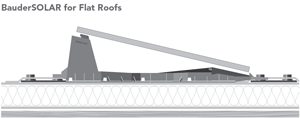
This method is where the mounting system sits completely separate atop the waterproofing via substructures, that are held onto the roof through mounting plates and welding or bonding overlying membrane sleeves to the uppermost layer of the waterproof covering.
More info ►
These systems typically have large and stable attachment footprints with fixing tolerances that allow for levels of movement to occur without detriment to the entire stability of the array.
Penetrative Mechanical Fixings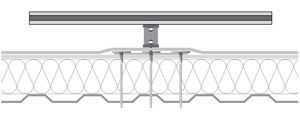
These also have two generic forms where the array is installed either via the creation of a plinth or a proprietary fixing post, the size and shape of which can have an impact on the safe waterproofing and thermal continuity of the roof. These forms of attachment can be the only option in pitched membrane applications or where wind loads are particularly high.
These two illustrations show typical detail designs for penetrative mechanical fixings.
PAUSE FOR THOUGHT!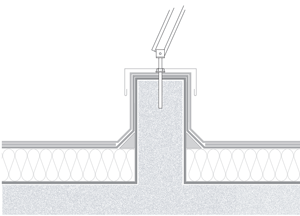
Any penetration of the roof structure and its waterproofing increases risk and could invalidate the manufacturer’s guarantee.
Does a penetrative mechanically fixed system really need to be specified or is another installation method possible?
Ballasted Systems
Generic ballasted PV system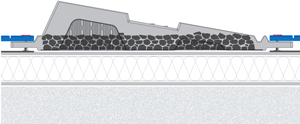
Installing a ballasted PV system requires confirmation from a structural engineer that the additional weight and wind load can be accepted into the design. The ballast itself can take different formats and it is important to confirm that the static load created by the designed ballast will be appropriate and sufficient in accordance with the wind load calculation report.
Where possible, the ballast should allow for a spread of load across the roof rather than any point or line loading.
In all ballasted applications a suitable protection layer must be allowed for. It is also important to ensure that any roof warranties will not be invalidated by the installation of a ballasted PV array. This must be agreed with the waterproofing warranty supplier.
BioSOLAR PV for Green Roofs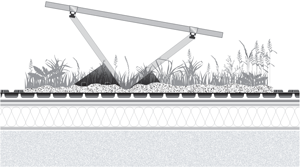
The substrate and vegetation provide the ballast to secure the array on the roof. The entire roof area qualifies as a green roof and if a biodiversity finish is specified this can further enhance roof element. More info ►
Arrange a meeting